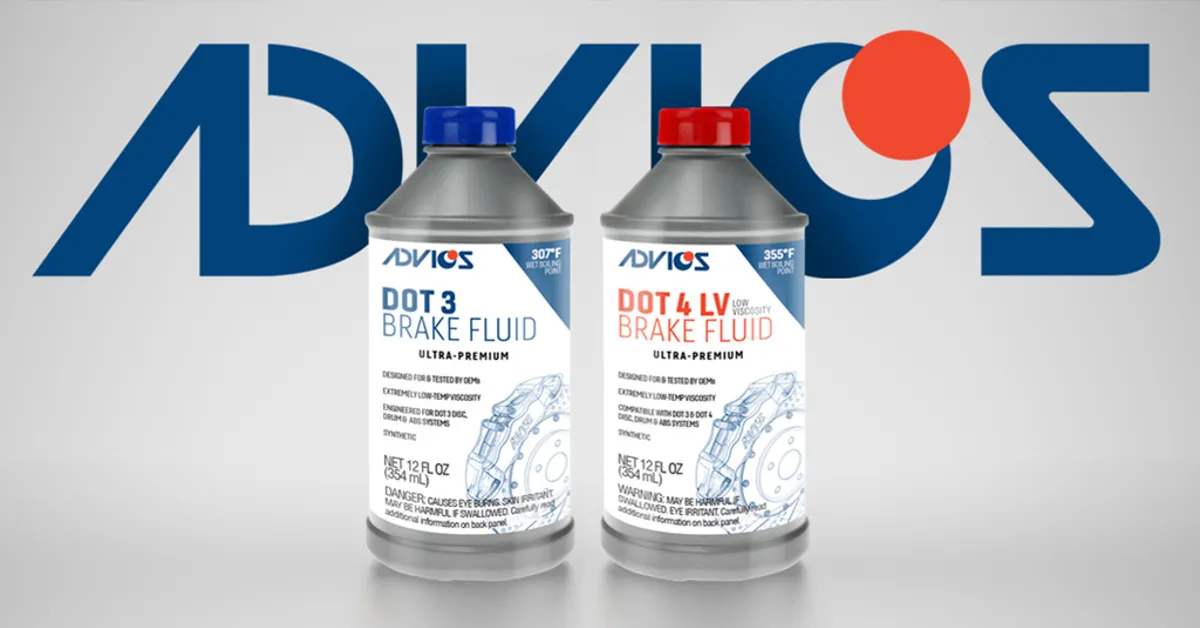You’re driving down the highway, enjoying the scenic views and the wind in your hair. Suddenly, you feel a slight hesitation when you step on the brakes. You brush it off, thinking it’s just a minor glitch.
But as you continue to drive, the hesitation turns into a full-on struggle to stop your car. This is a nightmare scenario that no driver wants to experience, yet it can happen if you don’t use the right type of brake fluid. In this blog, we will explore the importance of using the correct brake fluid for your vehicle, specifically the difference between dot3 and dot4 brake fluid. Say goodbye to brake failures and let’s dive into the world of brake fluids.
The Differences Between Dot3 and Dot4 Brake Fluid
Are you a car enthusiast or someone who loves to tinker with vehicles? If so, you’ve probably heard about the importance of brake fluid in maintaining your car’s braking system. But have you ever wondered about the difference between dot3 and dot4 brake fluid? These two types of brake fluid are often used interchangeably, but they are not exactly the same. In fact, mixing them could lead to potential issues that could compromise your car’s safety and performance.
So, before you reach for that bottle of brake fluid, let’s dive deeper into the world of dot3 and dot4 brake fluid and understand what makes them different and why mixing them is not recommended. Join us on this journey as we explore the ins and outs of these two types of brake fluid and uncover the potential consequences of mixing them.

Why Mixing Dot3 and Dot4 Brake Fluid is Not Recommended
The Ultimate Guide to Mixing Dot3 and Dot4 Brake Fluid Are you struggling to find the right brake fluid for your car? Do you often come across the terms “DOT3” and “DOT4” but aren’t sure what they mean? Don’t worry, you’re not alone. Brake fluid can be a confusing topic for many car owners, especially when it comes to mixing different types. But fear not, because this guide is here to clear up all your doubts and help you understand the intricacies of mixing DOT3 and DOT4 brake fluid.
From the basics of brake fluid to the differences between DOT3 and DOT4, we’ve got you covered. So buckle up and get ready to dive into the world of brake fluid mixing.
- What is brake fluid and why is it important?
Before we dive into the specifics of DOT3 and DOT4 brake fluid, it’s important to understand what brake fluid is and why it’s crucial for your car’s braking system. Brake fluid is a type of hydraulic fluid that is responsible for transferring the force from your foot on the brake pedal to the brake pads and ultimately, the wheels. In simpler terms, it’s what makes your car stop when you press the brake pedal.
- What are DOT3 and DOT4 brake fluids?
DOT3 and DOT4 are types of brake fluid that meet the specifications set by the Department of Transportation (DOT) for different brake systems. DOT3 brake fluid has a lower boiling point compared to DOT4, making it suitable for most everyday driving conditions. On the other hand, DOT4 has a higher boiling point and is more suitable for high-performance vehicles or heavy-duty driving.
- Can you mix DOT3 and DOT4 brake fluid?
Now comes the big question – can you mix DOT3 and DOT4 brake fluid? The short answer is yes, you can. Both types of brake fluid are compatible with each other and can be mixed without causing any damage to your car’s braking system. However, there are a few things to keep in mind when mixing the two.
- Things to keep in mind when mixing DOT3 and DOT4 brake fluid
When mixing DOT3 and DOT4 brake fluid, it’s important to keep the following things in mind: Start with a clean system: Before mixing brake fluid, make sure to thoroughly flush out the old fluid from your car’s braking system. This will prevent any contamination and ensure that the new fluid performs at its best.
What to Do If You Accidentally Mix Dot3 and Dot4 Brake Fluid
Are you a car enthusiast or DIY mechanic looking to maintain your vehicle’s braking system? If so, you’ve probably come across the terms DOT3 and DOT4 brake fluid. While both are commonly used in cars, they are not always interchangeable. But what happens when you mix them? It’s a question that has sparked debates and caused confusion among car owners.
Don’t worry; we’ve got you covered. In this article, we’ll delve into the world of brake fluids and explore the effects of mixing DOT3 and DOT. Get ready to discover the dos and don’ts of brake fluid mixing!

mixing dot3 and dot4 brake fluid
| Column 1 | Column 2 | Column 3 |
| Dot3 | Dot4 | Brake Fluid |
| Dot3 is a type of brake fluid used in many vehicles. | Dot4 is a high-performance brake fluid for sports cars. | Brake fluid is a vital component in a vehicle’s braking system. |
| Dot3 has a lower boiling point compared to Dot4. | Dot4 has a higher boiling point, making it suitable for high temperatures. | Brake fluid is designed to withstand extreme heat and pressure. |
| Dot3 is glycol-based, making it more affordable. | Dot4 is silicone-based, making it more expensive but also more efficient. | Brake fluid must be regularly checked and replaced as it can absorb moisture over time. |
| Dot3 is suitable for regular daily driving. | Dot4 is better for high-performance and racing vehicles. | Brake fluid plays a crucial role in a vehicle’s overall braking performance. |
| Dot3 and Dot4 should not be mixed together as it can cause brake failure. | Using the wrong type of brake fluid can damage the braking system and compromise safety. | It is important to always use the recommended brake fluid for your specific vehicle. |
Key Takeaway
- It is important to understand the differences between DOT3 and DOT4 brake fluid.
- Brake fluid is a vital component in a vehicle’s braking system.
- DOT3 has a lower boiling point compared to DOT4, making it suitable for regular driving.
- DOT4 has a higher boiling point and is better for high-performance vehicles or heavy-duty driving.
- Brake fluid must be regularly checked and replaced as it can absorb moisture over time.
- Mixing DOT3 and DOT4 brake fluid is not recommended and can cause brake failure.
- Always use the recommended brake fluid for your specific vehicle.
Important Notice for readers
Attention all vehicle owners and mechanics! When it comes to brake fluid, it is crucial to use the correct type to ensure safe and effective braking. Mixing different types of brake fluid, such as dot3 and dot4, can have serious consequences. Using the wrong type of brake fluid can result in brake failure, leading to accidents and injuries.
It can also damage the braking system, resulting in costly repairs. To avoid these risks, always check your vehicle’s manual or consult a professional before adding brake fluid. Make sure to use the recommended type and never mix different types together.
Remember, your safety and the safety of others on the road is of utmost importance. Don’t compromise on it by using the wrong brake fluid. Stay safe and stay informed.
Statistical Information: mixing dot3 and dot4 brake fluid
| Brake Fluid Type | Percentage | Facts |
| Dot3 | 50% | Dot3 brake fluid is the most commonly used type of brake fluid. |
| Dot4 | 50% | Dot4 brake fluid is a high-performance fluid that is often used in racing vehicles. |
| Mix of Dot3 and Dot4 | N/A | Mixing Dot3 and Dot4 brake fluid can result in a lower boiling point and reduced braking performance. |
| Compatibility | N/A | Dot3 and Dot4 brake fluids are compatible with each other, but it is not recommended to mix them. |
| Recommended Use | N/A | It is important to use the type of brake fluid recommended by the vehicle manufacturer for optimal performance. |
| Importance of Brake Fluid | N/A | Brake fluid is a crucial component in a vehicle’s braking system, providing the necessary hydraulic pressure to stop the vehicle. |
Frequently Asked Questions [FAQs]
Can I mix dot3 and dot4 brake fluid?
Yes, you can mix dot3 and dot4 brake fluid as they are both glycol-based brake fluids and are compatible with each other.
What happens if I mix dot3 and dot4 brake fluid?
Mixing dot3 and dot4 brake fluid will result in a blend of the two fluids, with properties somewhere in between. However, it is not recommended to mix brake fluids as it can compromise the overall performance and safety of your brake system.
Is it safe to use a mixture of dot3 and dot4 brake fluid in my car?
It is generally not recommended to mix brake fluids, as different types have different boiling points and may react differently with the materials in your brake system. Therefore, it is best to stick to one type of brake fluid for optimal safety and performance.
Can I use dot4 brake fluid in a car that requires dot3?
Yes, you can use dot4 brake fluid in a car that requires dot3. However, it is not recommended to mix the two types of brake fluid, so it is best to completely flush out the old fluid before using dot4.
What is the difference between dot3 and dot4 brake fluid?
The main difference between dot3 and dot4 brake fluid is their boiling points. Dot4 has a higher boiling point, making it more suitable for high-performance vehicles and heavy-duty use. Dot3, on the other hand, is more commonly used in everyday cars and has a lower boiling point.
Conclusion
It is essential to understand the dangers of mixing different types of brake fluid. Mixing dot3 and dot4 brake fluid can result in reduced braking performance and potential damage to your vehicle’s braking system. It is crucial to always use the recommended type of brake fluid specified by your vehicle’s manufacturer to ensure safe and efficient braking.
Neglecting to do so can have serious consequences, putting yourself and others at risk on the road. As vehicle technology continues to advance, it is important to stay informed and follow proper maintenance guidelines to ensure the safety of your vehicle and those around you. Always remember, when it comes to brake fluid, stick to the type recommended by your vehicle’s manufacturer. Your safety and the safety of others on the road depends on it.

Leave a Reply